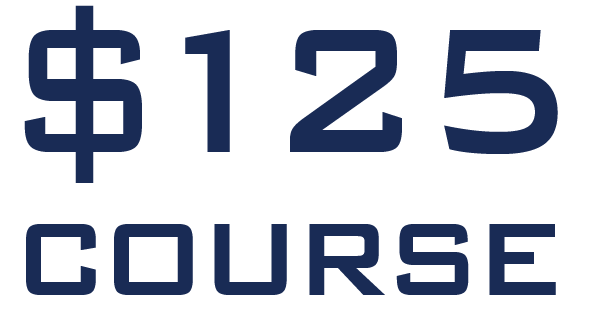Importance of Pacing for Online High School Students
In today’s digital education landscape, online learning has become increasingly prevalent among high school students. One of the most significant challenges these students face is maintaining proper pacing throughout their self-directed courses. Effective pacing isn’t just about moving quickly through material—it’s about establishing a sustainable rhythm that promotes deep learning while preventing burnout. For online high school students, mastering the art of pacing can mean the difference between academic success and frustration.
Self-paced courses offer tremendous flexibility, but this freedom comes with responsibility. Without the structure of traditional classrooms, students must develop their own strategies to stay on track. This article explores comprehensive approaches to help online high school students establish effective pacing strategies, overcome common obstacles, and maximize their learning potential in virtual environments.
Whether you’re a student who has recently transitioned to online learning or a parent supporting your child’s virtual education journey, understanding the principles of effective pacing will provide valuable tools for academic success. Let’s dive into practical strategies that can transform the online learning experience from potentially overwhelming to empowering and productive.
Understanding the Challenges of Self-Paced Learning
Before developing effective pacing strategies, it’s essential to recognize the unique challenges that online high school students face. Unlike traditional classroom settings, self-paced courses lack external timing structures that naturally regulate progress. Without regular class periods, scheduled discussions, or immediate teacher oversight, students must independently manage their learning timeline. This autonomy can be both liberating and daunting, especially for those new to online education.
Procrastination represents one of the most significant obstacles to effective pacing. When deadlines seem distant or flexible, the temptation to postpone work becomes stronger. Many students fall into the trap of back-loading their coursework, creating unnecessary stress and compromising learning quality. Additionally, without the social accountability of peers working alongside them, students may struggle to maintain consistent momentum throughout their courses.
Another common challenge is difficulty in accurately estimating time requirements for different assignments. Without experience, students often underestimate how long complex projects might take or overestimate their ability to complete multiple tasks in a short timeframe. This miscalculation can lead to rushed work, missed deadlines, or the need to request extensions—all of which disrupt optimal pacing and create academic stress.
Digital distractions present yet another hurdle for online learners. When education happens on the same devices used for entertainment and social media, maintaining focus becomes considerably more difficult. The constant temptation to check notifications or browse unrelated content can fragment attention and significantly extend the time needed to complete assignments, throwing carefully planned pacing schedules off track.
Creating a Personalized Pacing Plan
Developing a personalized pacing plan is the foundation of success in online learning environments. This plan should be tailored to individual learning styles, strengths, and challenges while accounting for course requirements and personal commitments. The first step in creating an effective pacing plan involves thoroughly reviewing all course materials and requirements at the beginning of the term. Students should carefully note assignment due dates, exam schedules, and project milestones to gain a comprehensive overview of their workload.
Once course requirements are understood, students should establish realistic weekly and daily goals. Breaking down larger assignments into smaller, manageable tasks makes the workload less overwhelming and provides clear daily objectives. These micro-goals create a roadmap for consistent progress and help maintain steady pacing throughout the course. For example, rather than planning to “complete a research paper” in one sitting, students might schedule specific tasks like “research three sources,” “create outline,” and “write introduction” across several days.
Time blocking represents another powerful technique for maintaining effective pacing. This approach involves designating specific hours each day for coursework, creating a predictable routine that mimics the structure of traditional schooling. When implementing time blocking, students should consider their natural energy patterns—scheduling challenging cognitive tasks during peak mental alertness and saving less demanding activities for periods when energy typically wanes.
A well-designed pacing plan should also include buffer time for unexpected challenges or difficulties. Building flexibility into the schedule acknowledges that learning doesn’t always progress linearly and that some concepts may require additional time to master. This buffer prevents cascading delays when a single assignment takes longer than anticipated, helping students maintain their overall course trajectory even when individual components require adjustment.
Tools and Technologies for Tracking Progress
Modern technology offers numerous tools that can support effective pacing for online high school students. Digital planners, task management applications, and specialized academic calendars can transform abstract pacing plans into concrete, visual systems. These tools provide reminders, track completion percentages, and offer satisfying visual representations of progress that can boost motivation and accountability.
Learning management systems (LMS) used by most online schools typically include progress tracking features that students should fully utilize. These platforms often display completion percentages, upcoming deadlines, and sometimes even estimated time requirements for various assignments. Regularly consulting these built-in tools helps students maintain awareness of their pacing relative to course expectations and make timely adjustments when necessary.
For students who prefer analog methods, physical planners, wall calendars, or bullet journals can serve as effective pacing tools. The tactile experience of physically checking off completed tasks or visually mapping out weekly goals can provide a different kind of satisfaction and accountability. Many students find that combining digital and physical tracking methods creates a comprehensive system that reinforces their pacing awareness across different contexts.
Productivity apps with Pomodoro timers or focus sessions can help students maintain concentrated work periods, which are essential for efficient pacing. These applications typically alternate focused work intervals with short breaks, helping students maintain high productivity while preventing burnout. By tracking actual time spent on various tasks, these tools also help students develop more accurate time estimation skills, which improves future pacing plans.
Establishing Effective Daily Routines
Consistent daily routines form the backbone of successful pacing strategies for online high school students. These routines create structure in an otherwise flexible learning environment, helping students maintain steady progress without constant external prompting. An effective academic routine begins with a designated learning space—a consistent location associated with focused work rather than relaxation or entertainment. This environmental consistency helps trigger the brain to enter “learning mode” more quickly, improving concentration and productivity.
Starting each day with a brief planning session can significantly enhance pacing effectiveness. During this time, students should review their broader pacing plan, identify specific tasks for the day, and estimate time requirements for each. This morning review creates clear intentions and prevents the aimless browsing or indecision that often leads to wasted time. Some students find it helpful to write down these daily objectives in a visible location as a constant reminder of their pacing goals.
Regular start and end times for schoolwork help regulate energy and focus throughout the day. While one advantage of online learning is flexibility, maintaining somewhat consistent hours creates helpful boundaries between academic and personal time. These boundaries prevent work from expanding to fill all available time—a common issue that leads to burnout and resentment toward learning. Clear delineation between work and rest supports sustainable pacing over the long term.
Incorporating brief transition rituals between subjects or tasks can also improve pacing effectiveness. These might include a five-minute stretch break, a short walk, or a few minutes of mindfulness practice. Such transitions help reset mental focus, prevent cognitive fatigue, and maintain higher levels of productivity throughout the day. Rather than viewing these breaks as time away from learning, students should recognize them as essential components of effective pacing that enhance overall learning efficiency.
Balancing Consistency with Flexibility
While consistency forms the foundation of effective pacing, successful online students also develop flexibility within their structured approaches. Rigid adherence to predetermined schedules can sometimes create unnecessary stress when unexpected situations arise. The most effective pacing strategies balance predictable routines with adaptability, allowing students to adjust their approach when circumstances change without abandoning their overall progress plan.
One practical approach to balancing consistency and flexibility involves categorizing tasks by their urgency and importance. This prioritization framework helps students make intelligent decisions about which elements of their pacing plan can be adjusted when unexpected events occur. By focusing first on high-priority, time-sensitive assignments, students can maintain progress on essential work even when their ideal schedule faces disruption.
Regular weekly reviews provide another opportunity to balance consistency with flexibility in pacing. During these reviews, students should assess their progress against their planned pace, identify any developing patterns of difficulty, and make thoughtful adjustments to their upcoming week’s plan. This systematic reflection prevents small daily variations from accumulating into significant delays while allowing for necessary adaptations based on actual learning experiences.
Developing contingency plans for common disruptions can also help maintain effective pacing despite life’s unpredictability. Students might designate specific “catch-up” periods in their weekly schedule that remain unassigned until needed or develop abbreviated versions of their daily routine for days with limited availability. These preplanned alternatives maintain the spirit of consistent pacing even when the original plan requires modification.
Overcoming Procrastination and Maintaining Motivation
Procrastination represents one of the greatest threats to effective pacing in online education. Understanding the psychological mechanisms behind procrastination can help students develop targeted strategies to overcome this common challenge. Often, procrastination stems not from laziness but from anxiety about performance, feeling overwhelmed by large tasks, or difficulty initiating work without external pressure. Recognizing these underlying causes allows students to address the root issues rather than simply berating themselves for delayed work.
The “two-minute rule” offers a practical approach to overcoming procrastination and maintaining steady pacing. This technique involves committing to just two minutes of work on a challenging task—a timeframe so short that the psychological resistance to starting diminishes significantly. Once begun, students often continue working well beyond the initial two minutes, having overcome the most difficult hurdle of initiation. This simple strategy can prevent small delays from snowballing into significant pacing problems.
Creating accountability systems provides external motivation that supports consistent pacing. These systems might include study partners who check in daily, parents who review weekly progress, or online communities where students share goals and accomplishments. Some students benefit from apps that use social accountability or even financial stakes to reinforce commitment to planned pacing. The key is finding accountability mechanisms that feel supportive rather than punitive.
Reward systems can also reinforce effective pacing behaviors until they become habitual. Students might establish small rewards for daily pacing achievements and larger rewards for maintaining consistent progress over weeks or months. Effective rewards are personally meaningful, proportional to the accomplishment, and genuinely enjoyable rather than merely checking another box. By associating positive experiences with successful pacing, students gradually internalize these behaviors as rewarding in themselves.
Addressing Common Pacing Pitfalls
Even with solid pacing plans in place, online high school students often encounter specific challenges that can disrupt their progress. One common pitfall is the “perfectionism trap”—spending excessive time refining early assignments while falling behind on subsequent work. Students should establish reasonable quality thresholds and time limits for each task, recognizing that perfect work across all assignments is neither possible nor necessary for academic success.
Another frequent pacing challenge involves content difficulty imbalances across a course. Students often move quickly through familiar or engaging material only to encounter unexpected difficulty with new concepts, creating sudden pacing disruptions. Previewing upcoming content and maintaining communication with instructors about challenging sections can help students anticipate and plan for these natural variations in learning speed.
The “false finish line” represents another subtle pacing pitfall. This occurs when students mentally relax after completing major assignments or exams, creating momentum gaps that can be difficult to overcome. Maintaining awareness of this tendency and immediately transitioning to the next learning objective helps preserve the consistent rhythm essential to effective pacing throughout the entire course.
Technology issues present practical challenges to online learning pacing that require specific contingency plans. Students should develop backup procedures for common technical problems, such as internet outages or platform access issues. Having alternative study materials accessible offline, knowing how to contact technical support, and maintaining communication channels with instructors about potential delays can prevent technology disruptions from significantly impacting overall course pacing.
Developing Self-Regulation Skills for Long-Term Success
Beyond specific pacing techniques, successful online high school students develop broader self-regulation skills that support their academic journey. These metacognitive abilities include accurately assessing one’s learning progress, identifying effective versus ineffective study strategies, and making autonomous adjustments to approach based on results. As students strengthen these self-regulation capabilities, their pacing becomes increasingly intuitive and requires less conscious management.
Regular self-assessment represents a cornerstone of effective self-regulation for online learners. Students should periodically evaluate not just their academic progress but also the effectiveness of their pacing strategies. Questions like “Am I consistently meeting my planned milestones?” “Which subjects or assignment types regularly throw off my pacing?” and “How accurately am I estimating time requirements?” help identify patterns that inform strategic adjustments.
Developing emotional awareness also supports effective pacing in online education. Students who can recognize when frustration, boredom, or anxiety are affecting their work can implement appropriate interventions before these emotions significantly disrupt their progress. Simple techniques like taking a short break, switching to a different subject temporarily, or using stress-reduction strategies can help maintain consistent pacing despite emotional fluctuations.
Perhaps most importantly, successful online students cultivate a growth mindset regarding their pacing abilities. They view pacing challenges not as personal failures but as valuable feedback that informs improvement. This perspective transforms setbacks into learning opportunities and prevents temporary disruptions from undermining confidence. With practice and reflection, students gradually internalize effective pacing as a skill they can continuously develop rather than an innate ability they either possess or lack.
Conclusion: Mastering the Art of Self-Paced Learning
Effective pacing stands as one of the most valuable skills online high school students can develop—a capability that extends far beyond academic contexts into college readiness and professional success. By implementing structured planning approaches, utilizing appropriate tools, establishing consistent routines, and developing self-regulation strategies, students can transform the potential challenges of self-paced learning into significant advantages. The autonomy that initially presents difficulties becomes a powerful asset when paired with strong pacing skills.
The journey toward mastering pacing in online education is inherently iterative. Students should expect their strategies to evolve as they gain experience, encounter new challenges, and develop deeper self-awareness. This continuous refinement process itself represents valuable learning that builds metacognitive abilities applicable across all areas of life. Each adjustment to a pacing plan reflects growing self-knowledge and increasing capacity for independent learning.
Parents and educators supporting online high school students should recognize that pacing skills develop gradually and require both structure and space for personal discovery. Providing frameworks, tools, and accountability while allowing students to experience natural consequences of their pacing decisions creates the optimal environment for growth. This balanced support helps students internalize effective pacing as a personal value rather than an externally imposed requirement.
Ultimately, mastering the art of pacing in online education empowers students not just to complete courses successfully but to become architects of their own learning journeys. This self-direction represents perhaps the most valuable outcome of online education—preparing students not merely for the next academic challenge but for lifelong learning in an increasingly digital and autonomous world. The pacing skills developed today become the foundation for continuous growth and adaptation throughout life’s educational and professional pathways.























